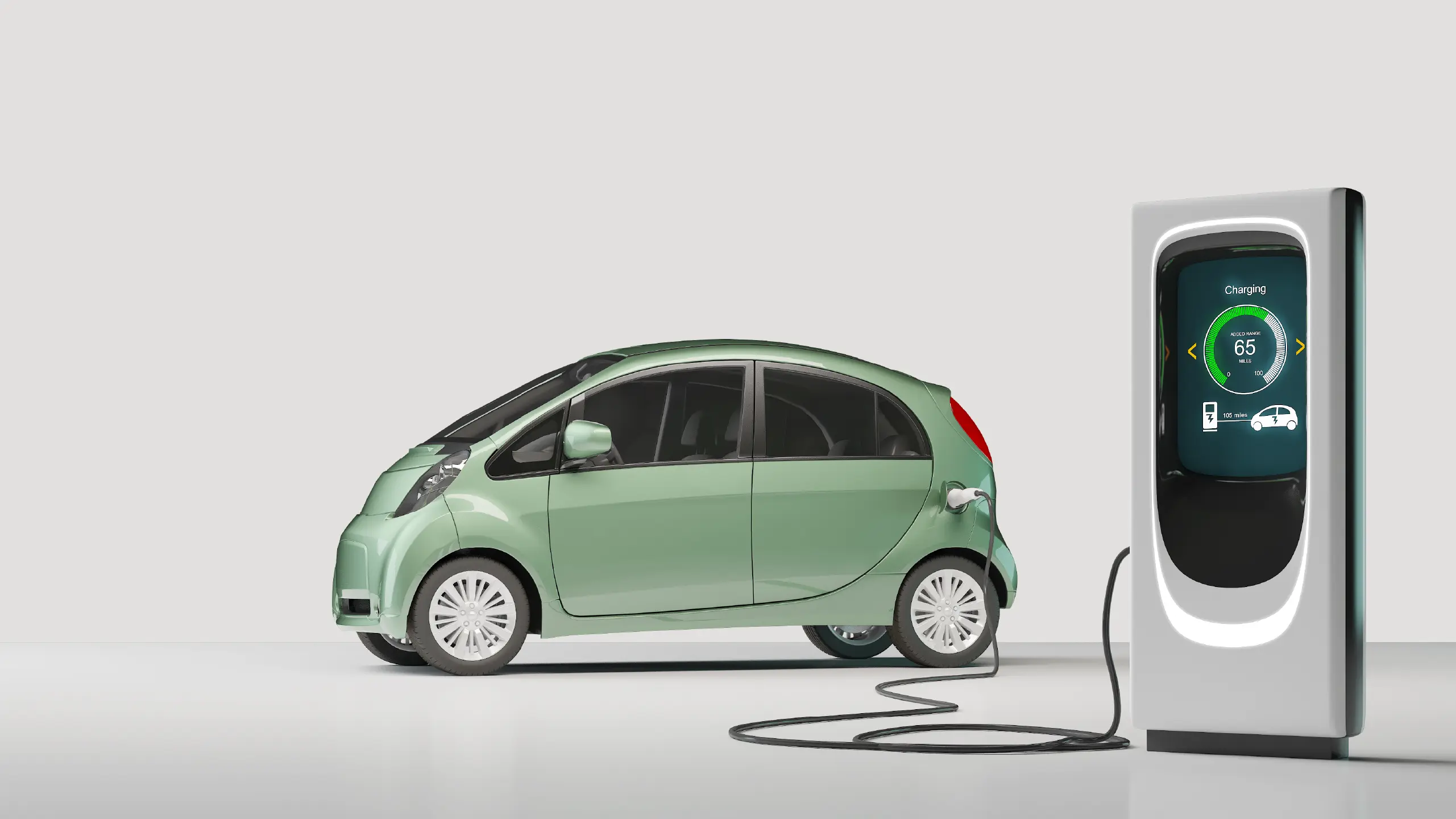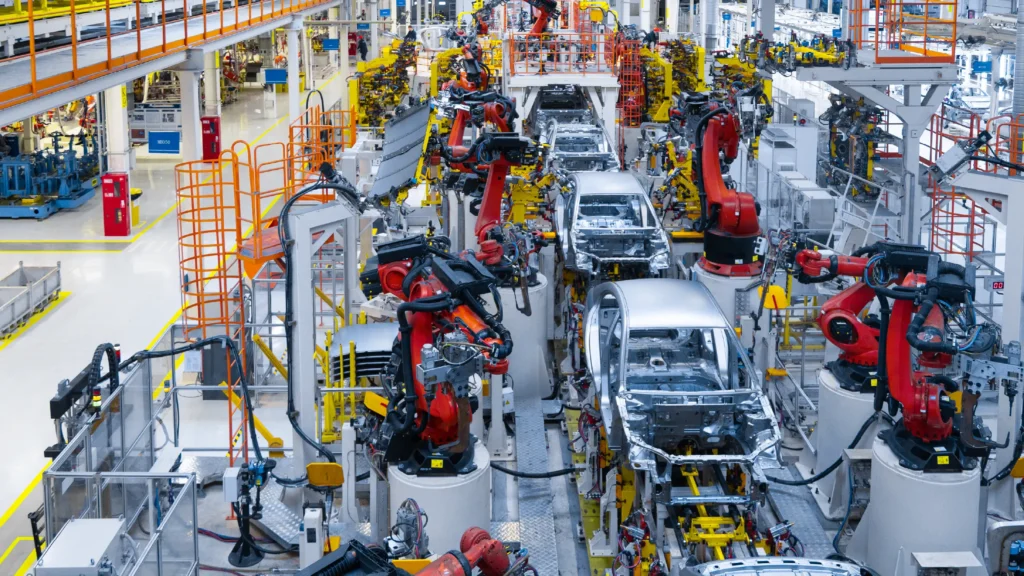
What’s Powering the EV Boom? Trends Driving Electric Vehicle Adoption in 2025
The year is 2025, and the electric vehicle (EV) industry isn’t just humming—it’s roaring down the fast lane, overtaking skeptics and fossil-fueled competitors in one decisive swoop. Electric vehicle adoption trends 2025 aren’t just about the shiny Teslas and the sleek European SUVs on your Instagram feed. They’re about a global transformation in how we think about mobility, climate responsibility, and—let’s be honest—our status as tech-savvy early adopters.
For businesses, investors, and policymakers, this shift is more than just a headline—it’s a data-driven goldmine. And at Blackwater, we’ve been tracking the EV market growth 2025 curve with the precision of a Formula E pit crew. From the factors driving EV adoption to the electric vehicle demand forecast that’s reshaping supply chains, we’re here to dissect the forces powering this movement—and explain why the EV boom is not just a moment, but a market reality.
The Great Acceleration: Why 2025 Is the Tipping Point
If the 2010s were about “Will EVs catch on?” and the early 2020s were about “EVs are coming,” then 2025 is the year of “EVs are here—and you’re behind if you’re not plugged in.” Electric vehicle adoption trends 2025 show a massive inflection point: infrastructure, policy, and consumer attitudes are aligning in a way they simply hadn’t before.
The EV market growth 2025 story is one of compounding momentum. We’re seeing exponential battery technology improvements, record-breaking government incentives, and auto manufacturers treating EV launches like high-stakes smartphone releases. This isn’t just an automotive revolution—it’s a redefinition of urban planning, energy usage, and even geopolitics.
Policy Is the New Horsepower
While horsepower used to be the bragging right in the automotive world, in 2025 it’s policy that’s flooring the accelerator. Countries across Europe, Asia, and North America are not just encouraging EV adoption—they’re legislating it into inevitability. Zero-emission vehicle mandates, tax credits, and carbon pricing are no longer fringe policies—they’re the backbone of national transportation strategies.
The factors driving EV adoption here are clear: when governments make it easier (and cheaper) to buy and charge an EV than to maintain a petrol guzzler, the consumer decision becomes simple. But policies don’t just affect buyers—they drive manufacturing investments, charging infrastructure expansion, and R&D in battery innovation.
Blackwater’s data shows that markets with aggressive EV-friendly policies see adoption rates up to three times higher than those without. That’s not just correlation—it’s proof that the electric vehicle demand forecast is inseparable from the legislative climate.
Charging Anxiety? Not in 2025

Remember when owning an EV meant planning every trip around where you could find a charger? That’s quickly becoming as outdated as asking your phone battery to last a week. By 2025, public and private investment in charging infrastructure has transformed the landscape.
Fast-charging networks are ubiquitous in urban centers, and even rural highways are getting high-capacity chargers that can juice your vehicle in under 15 minutes. In some cities, wireless charging pads embedded in parking spots are turning “plug-in” into “just park.”
This reduction in “range anxiety” is one of the most underestimated factors driving EV adoption. The EV market growth 2025 numbers correlate closely with the number of operational chargers per capita. Where infrastructure goes, adoption follows—like a well-charged shadow.
Batteries: From Weak Link to Powerhouse

In the early days of EVs, batteries were the Achilles’ heel—expensive, heavy, and slow to charge. But 2025 is a very different story. Battery technology has leapt forward, delivering higher energy density, faster charging times, and longer life cycles. Solid-state batteries are moving from the lab to the production line, and supply chain constraints around lithium are being addressed with advanced recycling and alternative chemistries.
This is more than a technological curiosity—it’s a primary driver in the electric vehicle demand forecast. Better batteries mean lower costs, longer ranges, and vehicles that can compete head-to-head with internal combustion engines not just in eco-friendliness, but in raw performance.
Blackwater’s research indicates that in markets where EVs exceed a 600 km range on a single charge, consumer hesitation drops dramatically. It turns out people are fine with going electric—so long as they can still take that impulsive road trip without checking a charging app every hour.
The Consumer Mindset Shift
The early adopters bought EVs for the tech and the environmental statement. The mass market is buying them because they’re simply better cars. Electric vehicle adoption trends 2025 highlight a psychological turning point: EVs have gone from “niche and futuristic” to “normal and practical.”
This shift is fueled by better design, competitive pricing, and the quiet realization that an EV is cheaper to run and maintain. No oil changes, fewer moving parts, and the joy of never stopping at a gas station—it’s the kind of convenience that sells itself.
Blackwater’s consumer research shows that word-of-mouth is becoming a surprisingly strong factor driving EV adoption. Satisfied EV owners are turning into informal brand ambassadors, and their stories carry more weight than any commercial.
Automakers Are All In

If 2020 was the year automakers dipped their toes into EV waters, 2025 is the year they cannonballed in. From legacy giants like Ford and Toyota to startups that didn’t exist five years ago, everyone wants a slice of the EV market growth 2025 pie.
We’re seeing record numbers of model launches across all categories—sedans, SUVs, pickups, even commercial trucks. This breadth of choice is key to electric vehicle adoption trends 2025 because it eliminates the “EVs don’t fit my lifestyle” excuse. Whether you’re a contractor hauling tools or a parent ferrying kids, there’s an EV for you.
And let’s not ignore design. These vehicles aren’t just efficient—they’re beautiful. Sleek lines, minimalist interiors, and software-first user experiences make them as much about lifestyle as transportation.
The Data Layer: EVs as Rolling Tech Platforms

One of the less discussed but powerful factors driving EV adoption is that these aren’t just cars—they’re data-driven, updatable tech platforms. Over-the-air software updates, advanced driver assistance systems, and deep integration with smart home and renewable energy systems are making EVs the centerpiece of a connected lifestyle.
This has big implications for the electric vehicle demand forecast. Buyers aren’t just comparing horsepower—they’re comparing app ecosystems. As automakers compete on AI-assisted driving, predictive maintenance, and personalized infotainment, EV ownership is becoming more about continuous improvement than depreciation.
Fleet Electrification: The Multiplier Effect
It’s not just individual consumers driving EV market growth 2025—commercial fleets are going electric at a breakneck pace. Logistics companies, ride-hailing services, and municipal bus systems are swapping out diesel for electrons.
This matters because fleet purchases create massive ripple effects. They drive economies of scale in manufacturing, accelerate the rollout of charging infrastructure, and normalize EVs in the public eye. When your local delivery van is electric, so is your neighbor’s perception of what “normal” looks like.
The Global Race: Who’s Leading in 2025?
Electric vehicle adoption trends 2025 vary widely across regions, and the reasons are as much cultural as economic. China remains a powerhouse, driven by aggressive policy and a manufacturing ecosystem that can bring innovations to market at lightning speed. Europe continues to lead in sustainable urban mobility, while North America’s growth is fueled by consumer choice and private-sector innovation.
For investors and businesses, these differences matter. The factors driving EV adoption in one market may not translate directly to another. That’s why at Blackwater, we segment our electric vehicle demand forecast by geography, policy environment, and infrastructure readiness—because in the EV race, the track is different in every country.
The Energy Question: Clean Miles or Just Electric Miles?
One of the more nuanced discussions in 2025’s EV boom is about the source of the electricity itself. If your EV is powered by a coal-heavy grid, are you really driving green?
The answer increasingly depends on regional energy transitions. As grids decarbonize, the climate benefits of EV adoption multiply. Renewable energy integration is now part of the EV value proposition, and many buyers are pairing their vehicles with home solar systems and battery storage.
This shift doesn’t just appeal to eco-conscious consumers—it impacts the total cost of ownership, further boosting the EV market growth 2025 numbers.
Blackwater’s Take: Why This Boom Is Different
At Blackwater, we’ve seen hype cycles before. But our analysis of electric vehicle adoption trends 2025 suggests this isn’t another speculative bubble—it’s a sustained transformation. The difference this time? Alignment. Technology, policy, infrastructure, and consumer sentiment are all pulling in the same direction.
Our electric vehicle demand forecast points to continued double-digit growth over the next five years, with EVs reaching parity—or superiority—in total ownership cost in almost every major market by 2026. And for businesses in the supply chain, energy sector, or even digital services, this presents enormous opportunities for growth.
A Final Lap: The Road Ahead
The EV boom of 2025 is powered by more than lithium and legislation—it’s driven by a collective shift in how the world thinks about mobility. From the humble commuter to the multinational fleet manager, the choice to go electric is becoming the default, not the exception.
For those watching from the sidelines, now is the time to get in the game. Whether you’re an investor, policymaker, or entrepreneur, understanding the factors driving EV adoption is key to staying relevant in this electrified future. And with market intelligence from Blackwater, you won’t just follow the electric vehicle adoption trends 2025—you’ll be ready to lead them.
Because in the race toward sustainable transportation, the real winners are those who saw the curve coming—and accelerated into it.



